European cuisine boasts a wide variety of pickled delicacies, with cucumbers holding a special place among them. The perfect preserved cucumber should be crisp and firm, but sometimes, despite their appetising appearance, they turn out hollow inside.
In this article, we’ll explore why pickled cucumbers end up hollow and provide tips on how to avoid this when preserving them.
Table of contents
Reasons for Hollow Pickled Cucumbers
The main reason cucumbers develop hollow cavities is the rupture of seed chamber tissues due to gas pressure. These cavities may already be present in fresh cucumbers or form during fermentation.
In other words, there are two possibilities:
- the cucumber was already hollow when pickled;
- it became hollow after pickling.
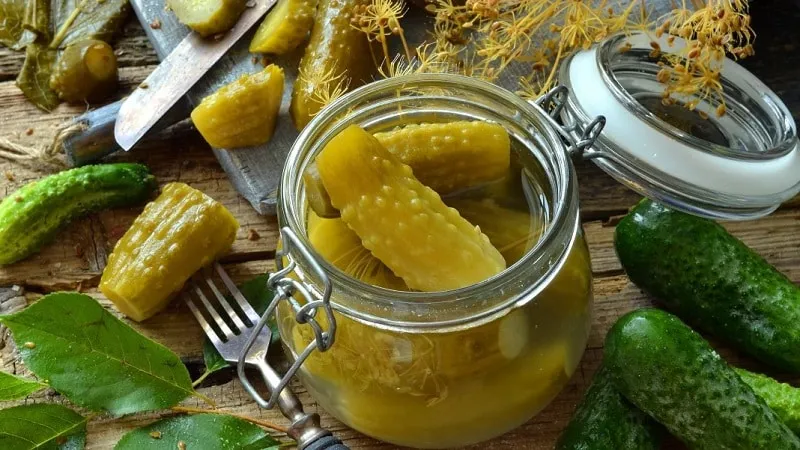
Factors contributing to hollow cavities include:
- poor agricultural practices: incorrect watering, excessive or insufficient fertilisation;
- mistakes in storing fresh and preserved cucumbers;
- slow fermentation with excessive gas release;
- overripe cucumbers.
Storage Mistakes
Improper storage often leads to hollow pickled cucumbers.
Common storage errors:
- Temperature. Storing pickles in warm environments increases air content inside the cucumbers, accelerates protein breakdown, and speeds up tissue ageing, worsening their texture and causing cavities.
- Storage duration. The longer pickles are stored, the more lactic acid degrades, negatively affecting texture and flavour.
- Loss of airtightness. If jars are not properly sealed, microorganisms can enter the brine, increasing gas formation inside the cucumbers.
The optimal storage temperature for sealed jars is between -1°C and +4°C, with humidity at 80–90%. Under these conditions, homemade pickles last 8–9 months. Once opened, consume within a few days.
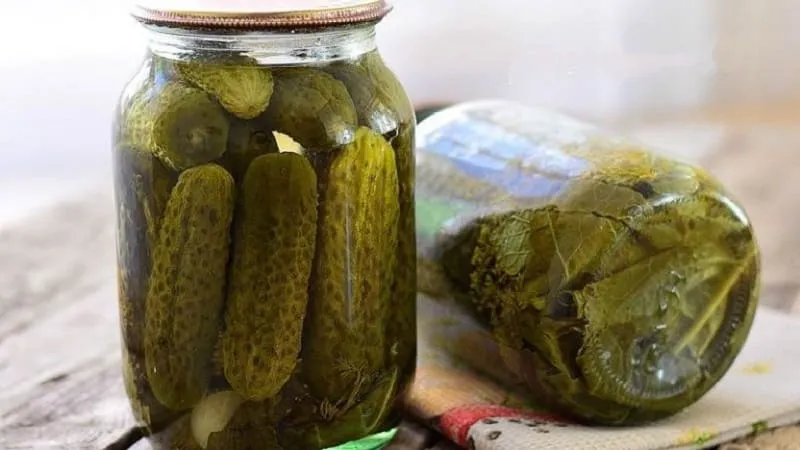
Storing pickled cucumbers in barrels for long periods is not ideal. Achieving a perfect seal is difficult, and brine often leaks. Refilling lost brine doesn’t fully restore lactic acid and other organic compounds.
Tip! To improve barrel-pickled cucumbers, seal and resin the barrels, then store them buried in ice.
For long-term storage, choose small cucumbers or gherkins, as they withstand adverse changes better than larger ones.
Incorrect Pickling Technique
The following mistakes contribute to hollow cucumbers:
- Delayed pickling. If cucumbers aren’t pickled on the day of harvest, they lose moisture and wilt. Later, when pickled, they become shrivelled outside and hollow inside.
- Skipping soaking. Pre-soaking helps cucumbers reabsorb lost moisture. The soggier the cucumbers, the longer they should soak.
- Mixing different-sized cucumbers. Fermentation speed depends on size, affecting storage longevity.
Note! Differently sized cucumbers vary in chemical composition, flesh density, seed chamber size, and internal air volume.
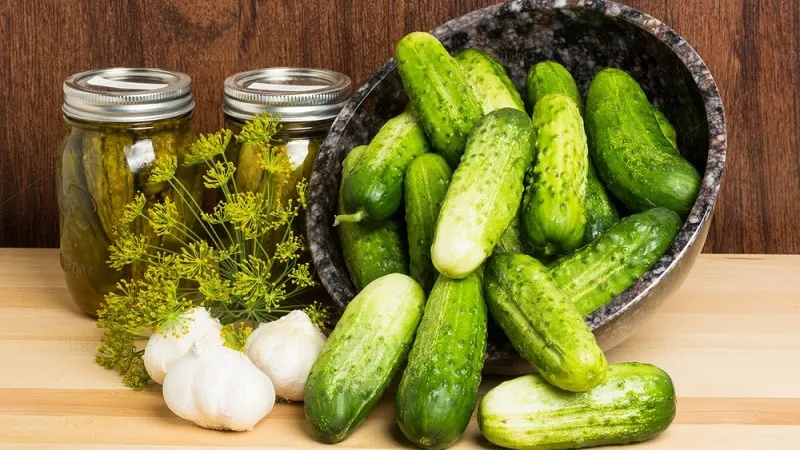
Brine Issues
A well-prepared brine is key to tasty pickles. Ignoring the chemistry of fermentation increases the risk of hollow cucumbers.
Tip! During fermentation, cellular fluids seep into the brine (osmosis), while salt from the brine penetrates the cucumber tissues (diffusion). Hollow cavities result from dehydration—an imbalance between these processes.
Soft, hollow cucumbers occur if:
- Soft water is used. Hard water (43–45° hardness) helps maintain firmness.
- Salt concentration is incorrect. Ideal brine strength is 6–8%. Lower concentrations leave air in the seed chamber, slowing fermentation; higher concentrations dehydrate cucumbers excessively.
- Iodised salt is used. It acts as an antiseptic, inhibiting lactic acid fermentation and causing slow fermentation, leading to hollow cavities.
Important! Consider both water hardness and salt hardness. The total brine hardness should be 60–75°.
Poor-Quality Cucumbers
Even with perfect storage, pickling technique, and brine, poorly selected cucumbers can still turn out hollow.
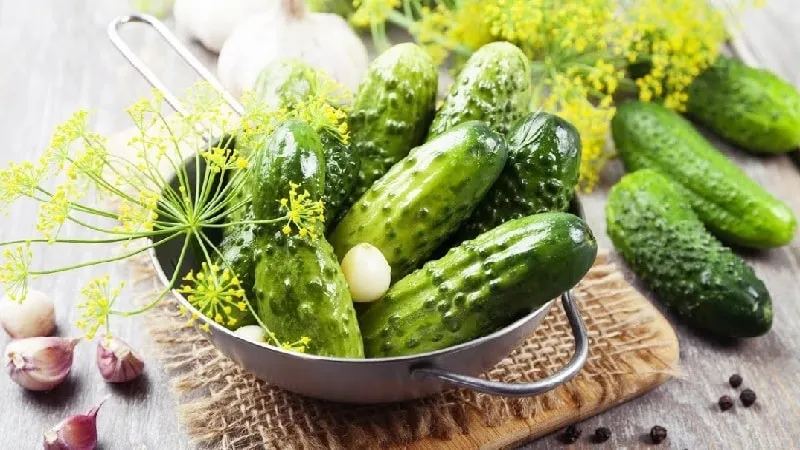
Common reasons:
- Overripe or oversized cucumbers. Larger seed chambers contain more air, increasing hollow risk.
- Cucumbers harvested in hot weather. High temperatures cause rapid moisture loss, leading to hollow cavities when pickled.
- Using salad cucumbers. These have smooth skin and white spines—unsuitable for pickling. Bumpy varieties are better due to their larger surface area, aiding faster diffusion.
Tip! During peak harvest, pick cucumbers every morning, preferably when dew-covered or after rain. Choose the greenest, firmest, youngest cucumbers.
Growing Mistakes
From a botanical perspective, hollow cavities result from disrupted placental development, where seeds form. The root cause is usually poor agricultural practices, rarely viral infections.
Dehydration leads to hollow cucumbers. Since cucumbers are 90–95% water, lack of moisture creates cavities—sometimes hidden beneath firm skin.
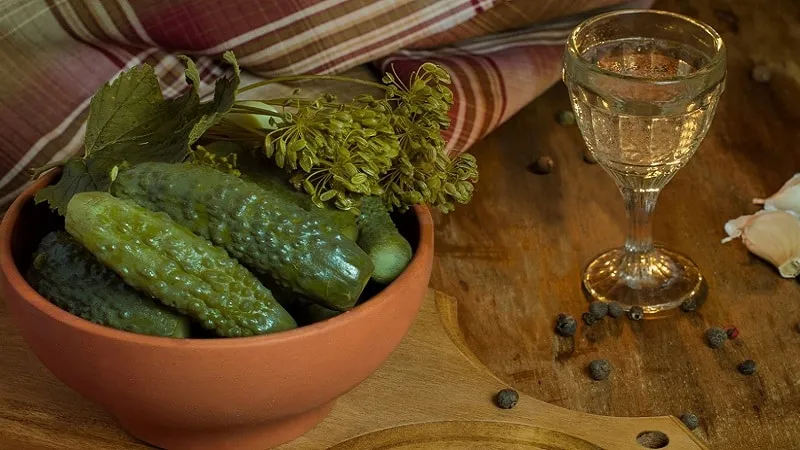
Causes of dehydration:
- insufficient watering;
- heavy watering after drought;
- sandy soils with poor water retention;
- soil mineral imbalance (lack of potassium, phosphorus, calcium; excess ammonium nitrogen);
- hot, dry air;
- large day-night temperature swings;
- late harvesting—overripe cucumbers draw moisture from their own reserves.
Solutions:
- Use nitrogen fertilisers only in early growth stages—for root and foliage development.
- During flowering and fruiting, use balanced fertilisers (potassium, calcium, phosphorus, magnesium, iron, etc.).
- Water regularly—soil moisture should stay above 75%.
- Mulch with a 15 cm layer to prevent topsoil drying.
- Use covers to maintain stable night temperatures.
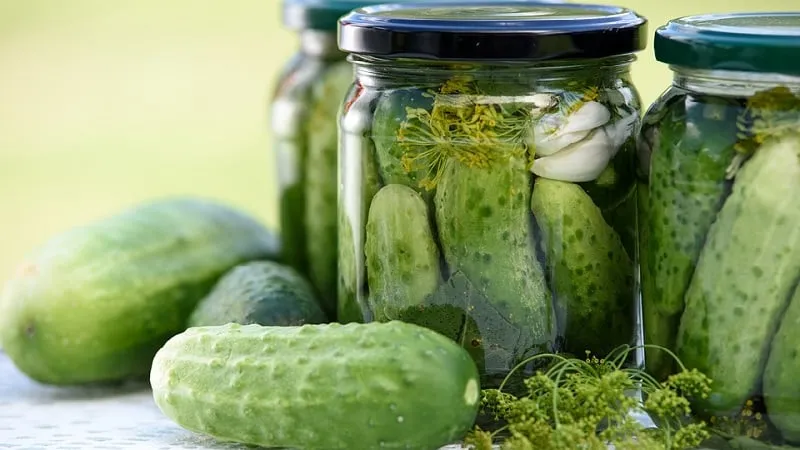
Wrong Variety
Choosing the right cucumber variety for pickling involves:
- Purpose: salad (not ideal), universal, or pickling (best).
- Size: gherkins (3–5 cm), small pickling cucumbers (7–9 cm), medium (up to 12 cm).
- Ripening time: early (prone to hollow cavities in cold weather), mid-season, late.
- Parthenocarpic hybrids (seedless) are less likely to develop hollow cavities.
Popular European varieties:
- Gherkins: 'Cornichon de Paris', 'Vert Petit de Paris'.
- Pickling cucumbers: 'Delikateß', 'Vorgebirgstrauben', 'Excelsior'.
- Parthenocarpic: 'Picolino', 'Socrates', 'Eiffel'.
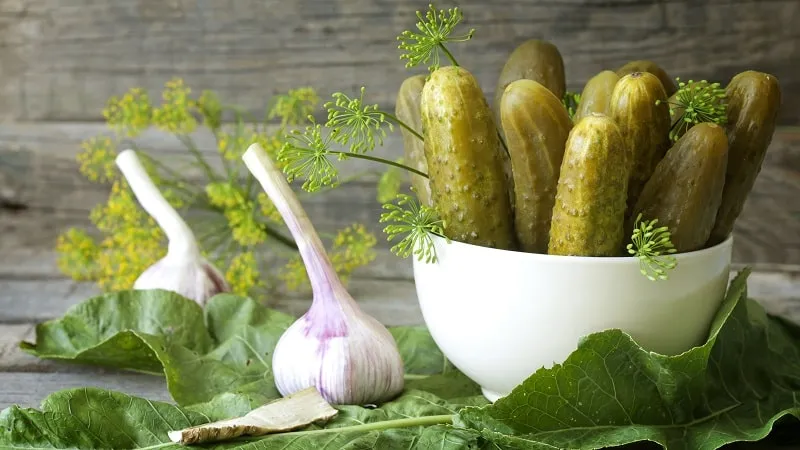
How to Pickle Cucumbers Correctly to Avoid Hollow Cavities
Follow these steps to prevent hollow pickled cucumbers:
Expert-recommended method:
- Choose young, green, firm cucumbers. Slightly underripe is fine; overripe is not.
- Wash and soak in cold water for 3–6 hours until plump and firm.
- Sort by size before pickling.
- Use jars no larger than 10 litres, washed with baking soda and sterilised in boiling water.
- Pack cucumbers vertically, layering with spices: peppercorns, garlic, dill, horseradish leaves, blackcurrant, and cherry leaves.
- For 6% brine, dissolve 60 g (2 tbsp) salt in 1 litre of boiling water.
- Hot method: Pour room-temperature brine over cucumbers, ferment for a week. Skim foam, drain brine, reboil, rinse cucumbers, then refill and seal.
- Cold method: Boil brine initially, ferment for 4–5 days, then top up absorbed brine before sealing.
Tip! Spices enhance flavour, balance fermentation, inhibit spoilage, and extend shelf life. Use no more than 5% spices by cucumber weight.
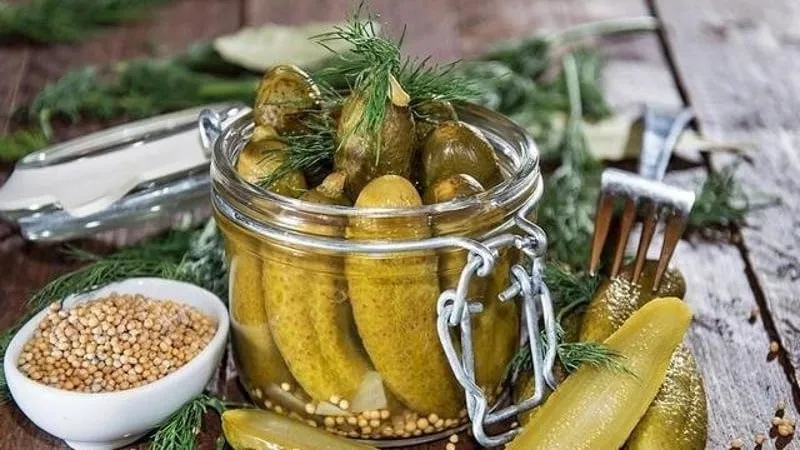
Tips from Experienced Cooks
Additional practical advice:
- Pre-soak hollow cucumbers in salted water to help them absorb moisture.
- Revive soft cucumbers with an ice-water bath—they’ll firm up for pickling.
- Pricking cucumbers before pickling reduces hollow risk.
- Use well or spring water for brine—avoid filtered tap water.
- Rock salt works best; avoid iodised or Himalayan salt.
- Oak or alder barrels are ideal—they don’t absorb brine or rot, and add flavour.
Conclusion
Many factors contribute to hollow pickled cucumbers. Fresh cucumbers develop cavities due to dehydration from poor growing practices. Prevent this by maintaining soil moisture and mineral balance, and choosing hybrids with small seed chambers.
To avoid tissue rupture during fermentation, pre-soak cucumbers, calculate brine strength and hardness precisely, and store pickles correctly.







